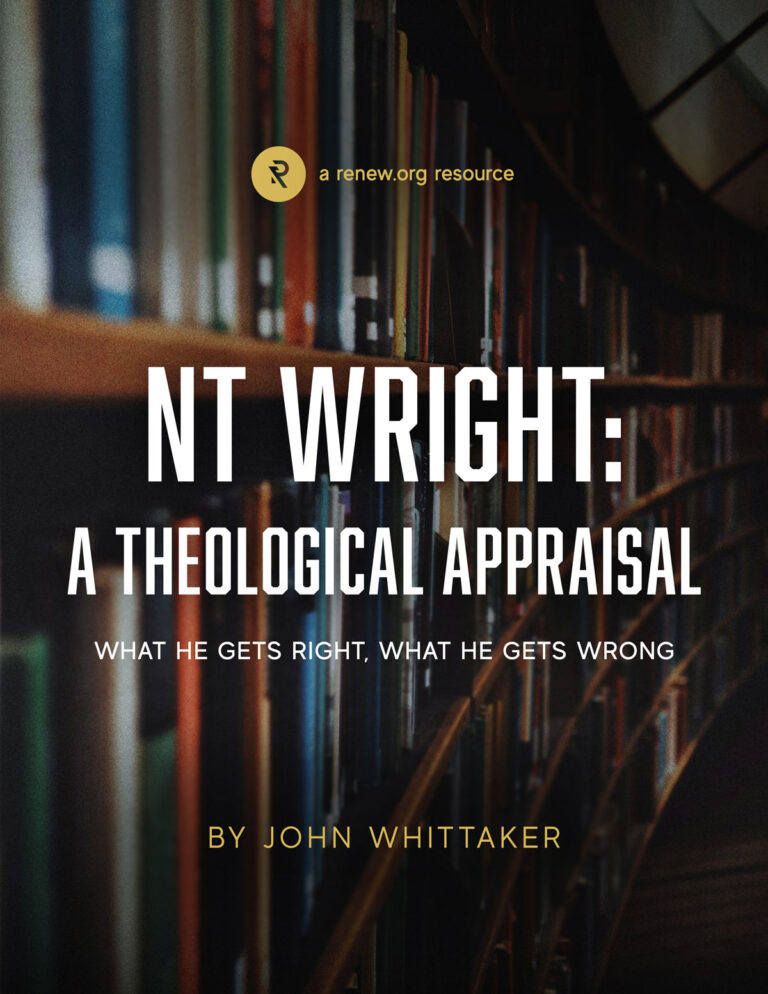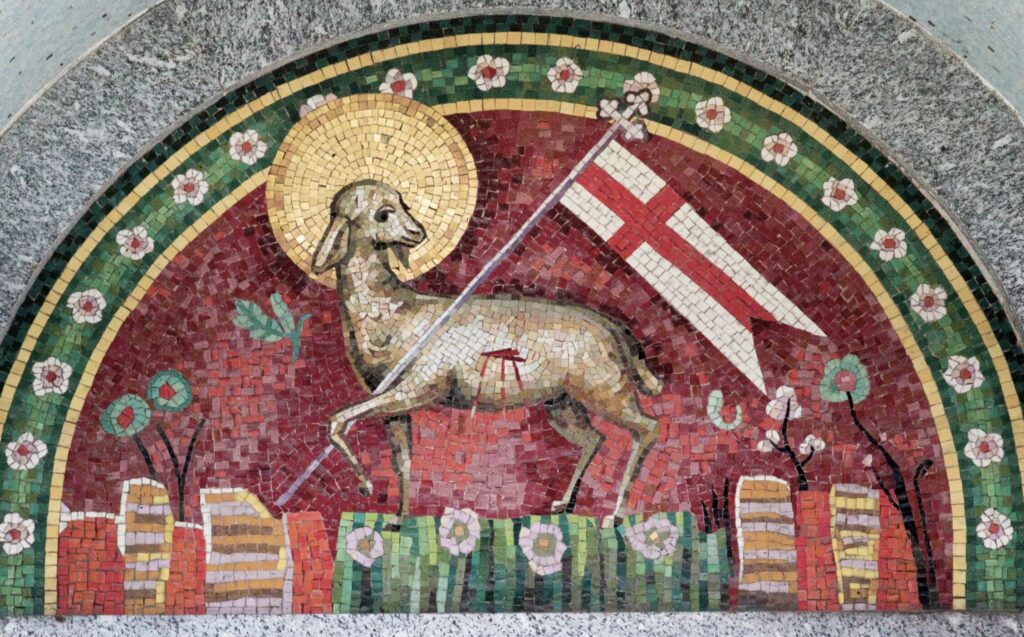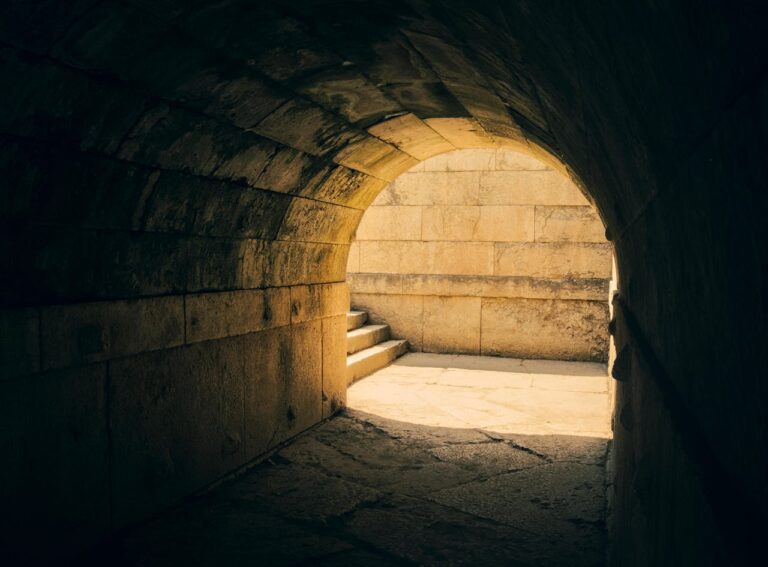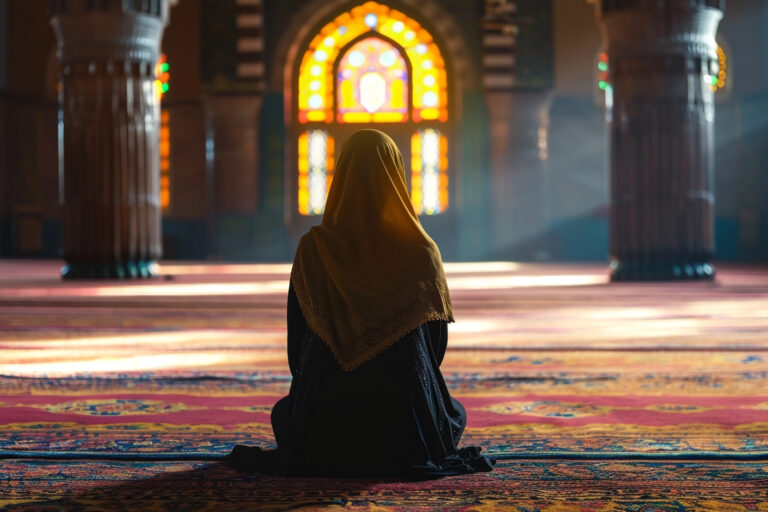Here is a short summary of Revelation:
Revelation is a letter written to the seven churches of Asia as a prophecy in the form of apocalyptic literature. It uses drama and symbols to communicate its message of warning and encouragement. The present state of affairs is pictured as a time of tribulation for the churches then and now. Lying behind this tribulation is the dragon (aka Satan) and his two henchmen, the beast from the sea and the beast from the earth. But God is still on his throne along with Jesus, the Lamb that was slain. Jesus reigns as King over all things, including the trouble and tribulation of the world. His followers remain loyal to him, testifying to His kingship, laying down their lives even if faced with death. And in the end, Jesus will vanquish his enemies and eliminate all evil. Then, God will usher in a new creation and dwell together with his people forever.
The Backstory of Revelation[1]
Revelation is an infamously difficult book. One reason for that is its unfamiliar literary form (more on that below). Another reason is that oftentimes Bible teachers treat it differently than other Bible books by ignoring the original context. This is unfortunate. So, as you approach Revelation here’s what you must remember: there was an original audience and original setting, and the message of Revelation was originally for them before it was for us.
Here’s the backstory to the book.
It’s around the year A.D. 95[2] and the apostle John has been exiled to the island of Patmos off the coast of Ephesus because of his ministry for Jesus. He had been living in Ephesus and overseeing several of the churches of western Asia Minor. The Christians within these churches were struggling to be faithful to Jesus as suspicion and hostility toward them increased from the surrounding society. John refers to this moment that he and the churches of Asia are enduring as “the tribulation” (1:9).
While on Patmos, John receives a series of visions which he is instructed to write down and deliver to the churches of Asia. This message to these churches is the book of Revelation, and it is intended to strengthen their faith and ours.
What’s going on with the churches John is writing to?
The churches which John writes to lie in Asia Minor, a province under the rule of the Roman Empire. By the first century A.D., Rome had conquered a vast territory extending from Britain and Spain in the west to the Euphrates River in the east. Their Empire incorporated many different ethnic groups and cultures. And one of Rome’s chief values as it sought to unite all these diverse peoples was order.
“While on Patmos, John receives a series of visions which he is instructed to write down and deliver to the churches of Asia.”
And indeed, Rome did bring order—an amount of order, stability, and peace that the Mediterranean world never knew before. A common currency and a common legal system united the diverse peoples of the empire. For the wealthy elite, luxury prevailed. Rome was the great benefactor, and the Roman emperor was spoken of as the savior of the world.
But…
Rome maintained order and peace through powerful means of control. Its governors upheld Roman law. Its military presence was ever-present. The threat of violent reprisal for any hint of sedition hung heavy in the air. And self-promoting propaganda was the order of the day.
The original readers of Revelation were bombarded with images promoting Romeʼs self-glorifying vision of the world. Coins, statues, temples, and altars were all decorated with powerful symbols of Romeʼs magnificence. Rituals and festivals celebrated her honor and magnified the emperors. And as long as the wealth flowed, the businessmen and leaders throughout the Empire gladly gave themselves to this adoration.
One powerful way Rome propped up its might and authority was by cultivating the belief in its divine right to rule, and they cultivated this belief through religion. Temples dedicated to the goddess Roma were scattered throughout the Empire in which Rome itself was worshiped as divine and the myth that it was an eternal city was propagated.
“Temples dedicated to the goddess Roma were scattered throughout the Empire in which Rome itself was worshiped as divine.”
Individual emperors were worshiped as well. This was originally after their death, but as time went on some were honored as gods during their lifetime. Holy days were then placed on the calendar, and on those days work ceased, parties were held, and the emperors were celebrated as gods, often acclaimed with the titles “savior” and “lord.” Sometimes parade-like processions were part of these celebrations, and there’s some evidence that if your home or business lined the parade route you were expected to set up small altars outside your doors, burn incense or offer other sacrifices in the emperorʼs honor as the procession passed, and hail the emperor as lord.
During the late first century, when Revelation was written, this emperor cult flourished in Asia, where John and his audience lived. The cities competed heavily for the honor of building a temple to the emperor. When Revelation was written (ca. A.D. 95), Domitian reigned as emperor, and Domitian is famous for ascribing to himself divine rights and titles while he was still living, such as referring to himself as “Lord and God.”
A temple in honor of Domitian and his family members was located in the heart of downtown Ephesus, where the first church mentioned in Revelation was located. This temple included a 27-foot-tall statue and a large altar where sacrifices were offered in honor of Domitian’s family reign. Regular processions were held in honor of their royal greatness, and all citizens were expected to pledge their allegiance to the Empire by acknowledging that Caesar is Lord.
“All citizens were expected to pledge their allegiance to the Empire by acknowledging that Caesar is Lord.”
This posed a serious problem for Christians who only acknowledge that Jesus is Lord. To not participate in such emperor worship was not merely odd; it was like treason—a threat to the Pax Romana, the Roman Peace. It invited serious repercussions, including even the possibility of death.
In addition to illegitimate worship ascribed to the emperor, other forms of pagan idolatry were rampant. To not participate, therefore, excluded you from the business community, ruining your trade, bringing you financial ruin, and isolating you socially.
So, the daily reality for the original recipients of Revelation was this: to be a faithful Christian puts you at odds with your community politically, socially, and economically because all of those were tied together religiously.
As a result, suspicion of and open hostility toward Christians was on the rise in Asia at the time that John wrote Revelation. The Christians in Ephesus had “endured hardship” for Jesus (2:3). Antipas of Pergamum had already been executed (2:13). We know from records just 25 years after Revelation was written that to prove the sincerity of their loyalty to the Empire, Christians in Asia who renounced their faith in Jesus were required to worship images of the gods and images of the emperor.
This all must be kept in mind when reading Revelation, and one of the most important things Revelation does is provide a contrasting perspective on the world: a perspective from heaven. Rome promoted itself as divine and eternal, a benefactor bestowing gifts and blessings on the world. Revelation subverts this self-portrait, painting Rome as a harlot riding a beast, a minion of Satan corrupting the world.
“One of the most important things Revelation does is provide a contrasting perspective on the world: a perspective from heaven.”
In doing this, Revelation offers us a fresh set of lenses with which to view the world. Thereʼs far more going on in the world than meets the eyes, and Godʼs people must be wary of being seduced by the harlot. As Michael Gorman says, “Revelation is not about the antichrist, but about the living Christ. It’s not about a rapture out of this world but faithful discipleship in this world.”[3]
Before we look at an overview of Revelation, there’s one other important question we have to answer, namely, why is Revelation so weird? And the answer to that has to do with genre, the type of literature Revelation is.
The Genre(s) of Revelation
Revelation is actually a hybrid of three literary types. It’s addressed as a letter to the churches of Asia, which means, as we’ve noted, it is addressing their setting and their situation.
In addition, it describes itself as a prophecy (see 1:3), which means John and Revelation stand in line with Isaiah, Jeremiah, Daniel, and other biblical prophets. And contrary to popular opinion, the primary job of prophets like that was not to predict the future; their main job was to call God’s people back to loyal obedience to God. That’s what John is doing, too. In Revelation he’s calling on the churches he’s responsible for—those seven churches of Asia—to endure and remain faithful to Jesus.
Finally, Revelation is also an apocalypse…that is, it is apocalyptic literature. This is what makes Revelation feel so weird to us. While unfamiliar to us, apocalyptic literature was a well-known style of writing which flourished among the Jews from about 200 B.C.-A.D. 100. It communicated its message through visions and symbols to encourage God’s people to endure the hardship they were going through.
“While unfamiliar to us, apocalyptic literature was a well-known style of writing which flourished among the Jews from about 200 B.C.-A.D. 100.”
Revelation does this by pulling back the curtain to help the original readers and us see the world for what it is and to strengthen us to be faithful to the world’s true Savior and Lord. That wasn’t Domitian or any other emperor, king, president, or prime minister; the true Savior and Lord is Jesus Christ, the Lamb that was slain. It’s not the man with armies and wealth who was the most powerful man in the world; it’s the man now seated alongside God on the throne of the universe—the man killed by Caesar’s power but raised and exalted to God’s right hand.
That’s who’s really in charge!
Overview of Revelation
Revelation is presented like a grand two-act play with a prologue, introduction, and epilogue. Chapters 1-3 are the prologue and introduction. This prologue introduces the book, shows John’s vision of Jesus in all his glory, and records Jesus’ message to each of the seven churches. Chapter 22:6-21 is the epilogue, assuring the readers of the trustworthiness of this message of the book and calling them to be faithful because Jesus is coming soon to reward those who overcome. In between the prologue and epilogue lies the drama of the book in two acts.
Act 1: Revelation 4-11
Act 1 focuses on the sovereignty of Jesus over all the trouble and tribulation in the world. It includes three scenes.
Scene 1 is the vision of God’s throne room. God is seated on his throne holding a scroll with seven seals on it. No one is able to open the scroll until Jesus appears on scene. He’s the Lamb who was slain, and because of that he is given authority over what happens in the world and is worthy to open the scroll (chapters 4-5). This is the controlling scene for the book showing God’s and Jesus’ sovereignty as king over all. John watches the action in the drama unfold from here.
That leads into scene 2: the vision of the seven seals in chapters 6-8:1. Jesus the Lamb begins to open the scroll one seal at a time, leading to events happening on earth. It all culminates in seal six with “the great day of wrath” before an interlude showing who can stand before the wrath of God and then finally the opening of the seventh seal in 8:1.
Scene 3 is the seven trumpets (8:2-11:19). Notice that the trumpets are modeled after the plagues on Egypt from the book of Exodus. These are events that serve as trumpets of warning, calling people to repent. Unfortunately, mankind doesn’t repent. Just as in the seven seals, there’s an interlude before the seventh trumpet sounds, and this part of the scene shows mankind’s resistance to God’s spokesmen. Finally, trumpet seven sounds which leads to judgment and the reign of Christ.
“Trumpet seven sounds which leads to judgment and the reign of Christ.”
Then there’s a clear break between chapters 11 and 12. It’s like we’ve come to the middle part of the play. The curtain falls, intermission arrives, and the stage is reset before the curtain opens for Act 2.
Act 2: Revelation 12-22
When the curtain opens up in chapter 12, there are new characters: the dragon and his two henchmen, the beast from the sea, and the beast from the earth. Those characters dominate the second half of the drama, revealing that lying behind the trouble and tribulation of the world is spiritual enemies of God and his people. Jesus will vanquish them in the end. Act 2 includes 5 scenes.
Scene 1 is found in chapters 12-14. Chapters 12-13 introduce the dragon and the two beasts. In chapter 12, The dragon (aka Satan) seeks to destroy the Messiah at his birth but fails. The Messiah ascends to his throne, so the dragon pursues those who obey God and Jesus. To do that, he calls forth two henchmen in chapter 13: a beast out of the sea and a beast from the earth. The beast from the sea is a political, imperial beast. The beast from the earth is an ideological, religious beast, later in Revelation referred to as the false prophet, who props up the first beast.
Chapter 14 shows those who are marked as God’s people rather than being marked by the beast and calls them to be faithful to the Lamb. This chapter shows the judgment to come pictured as the “harvest of the earth.”
The drama then begins to zero in on the judgment to come. So, scene 2 is the the seven bowls of wrath which bring God’s wrath to completion (chapters 15-16).
“The Messiah ascends to his throne, so the dragon pursues those who obey God and Jesus.”
In scene 3, the drama zooms in to focus on the seventh bowl of wrath and looks in detail at the destruction of Babylon, the empire spawned by the beasts (17:1-19:10). She’s a harlot who has seduced other nations and kingdoms with her wealth, power, and luxury. But she meets her doom by the judgment of God.
The drama climaxes in scene 4 (19:11-20:15) by showing the destruction of the two beasts and the dragon, and their followers. The two beasts meet their demise, being thrown into the lake of fire. And the dragon is chained, imprisoned, released, and then condemned to the lake of fire along with the two beasts. And all of those whose names are not written in the book of life are also thrown into the lake of fire. Evil is vanquished once and for all!
Then scene 5 (21:1-22:5) shows the renewal of all things. There’s a new heavens and a new earth, and God’s faithful people—the new Jerusalem—are united with Christ at the wedding feast of the Lamb. Every tear is wiped away, and God dwells with his people forever, just the way he always intended!
The Seven Beatitudes of Revelation
Throughout the book of Revelation, we find seven statements of Beatitude meant to encourage followers of Jesus toward faithfulness:
“Blessed is the one who reads, and those who hear the words of the prophecy and keep the things which are written in it; for the time is near.”
—Revelation 1:3[4]
“And I heard a voice from heaven, saying, ‘Write, “Blessed are the dead who die in the Lord from now on!’” ‘Yes,’ says the Spirit, ‘so that they may rest from their labors, for their deeds follow with them.’”
—Revelation 14:13
“Behold, I am coming like a thief. Blessed is the one who stays awake and keeps his clothes, so that he will not walk about naked and people will not see his shame.”
—Revelation 16:15
“Then he said to me, ‘Write: “Blessed are those who are invited to the marriage supper of the Lamb.”’”
—Revelation 19:9a
“Blessed and holy is the one who has a part in the first resurrection; over these the second death has no power, but they will be priests of God and of Christ, and will reign with Him for a thousand years.”
—Revelation 20:6
“And behold, I am coming quickly. Blessed is the one who keeps the words of the prophecy of this book.”
—Revelation 22:7
“Blessed are those who wash their robes, so that they will have the right to the tree of life, and may enter the city by the gates.”
—Revelation 22:14
And One Climactic Passage
“Then I saw a new heaven and a new earth; for the first heaven and the first earth passed away, and there is no longer any sea. And I saw the holy city, new Jerusalem, coming down out of heaven from God, prepared as a bride adorned for her husband. And I heard a loud voice from the throne, saying, ‘Behold, the tabernacle of God is among the people, and He will dwell among them, and they shall be His people, and God Himself will be among them, and He will wipe away every tear from their eyes; and there will no longer be any death; there will no longer be any mourning, or crying, or pain; the first things have passed away.’”
—Revelation 21:1-4
[1] If you’d like more details on all of this background to Revelation, you can download a free 15-page study guide at listenerscommentary.com/revelation.
[2] This is the traditional date though some date it in the 60s.
[3] Gorman, Reading Revelation Responsibly, p. xv.
[4] All Scripture references are in New American Standard Bible.










